
Discovery of the M31 [OIII] emission arc
Recently, a major discovery by an international team of amateur astronomers and scientists has become a huge online hit, and this new discovery is just located in one of the
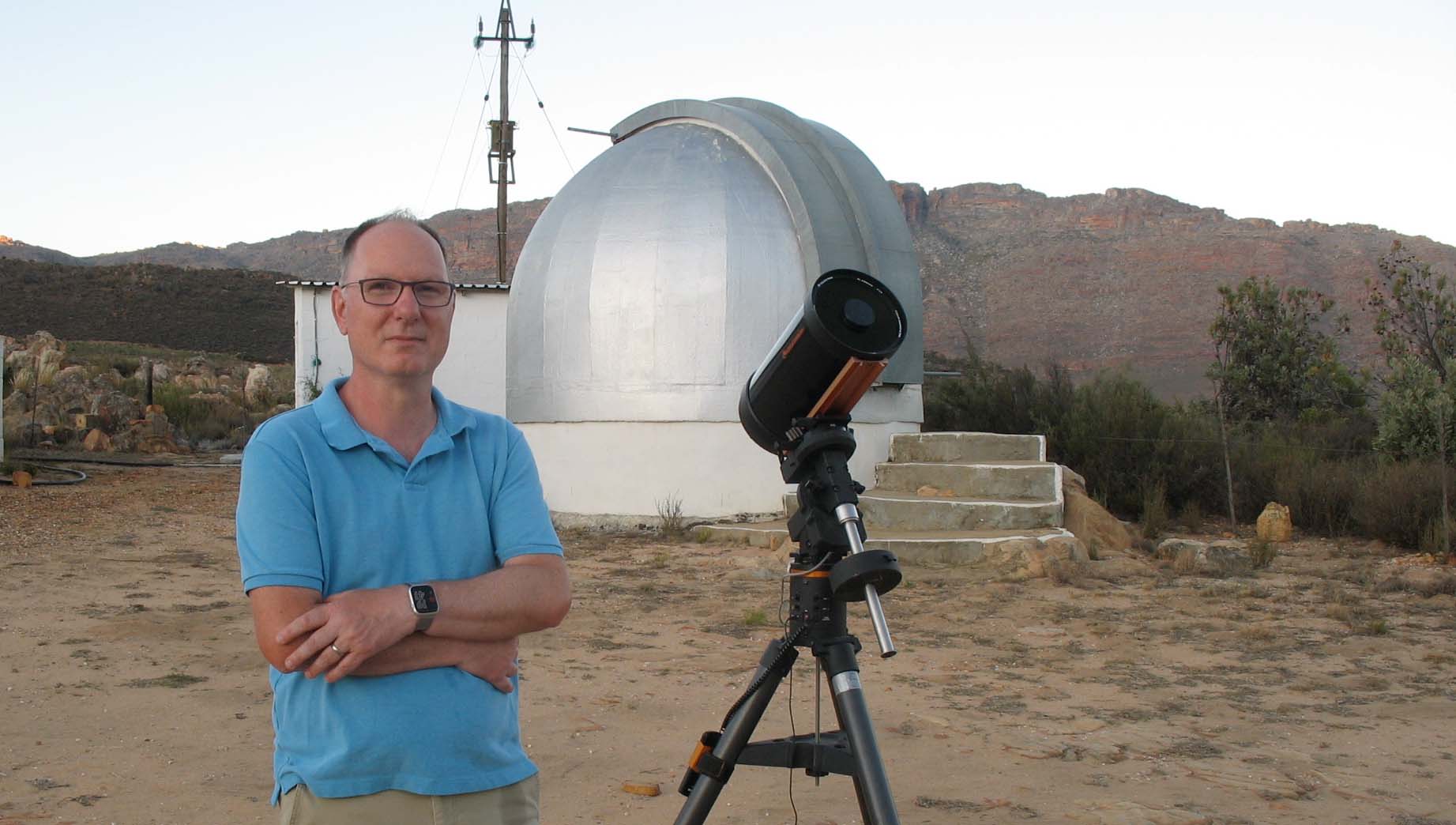
Hello Peter Dunsby,thanks for accepting our interview invitation. Congratulations on winning the ASIWEEK competition in week#46/2024!
Thanks very much for the ASI image of the week award. My name is Peter Dunsby. I’m 57 years old and live in Cape Town South Africa. I work as a professor and researcher in Cosmology at the University of Cape Town, so consider myself extremely privileged to be able to pursue my love of Astronomy, both as a career and as a hobby. @astrocapetown
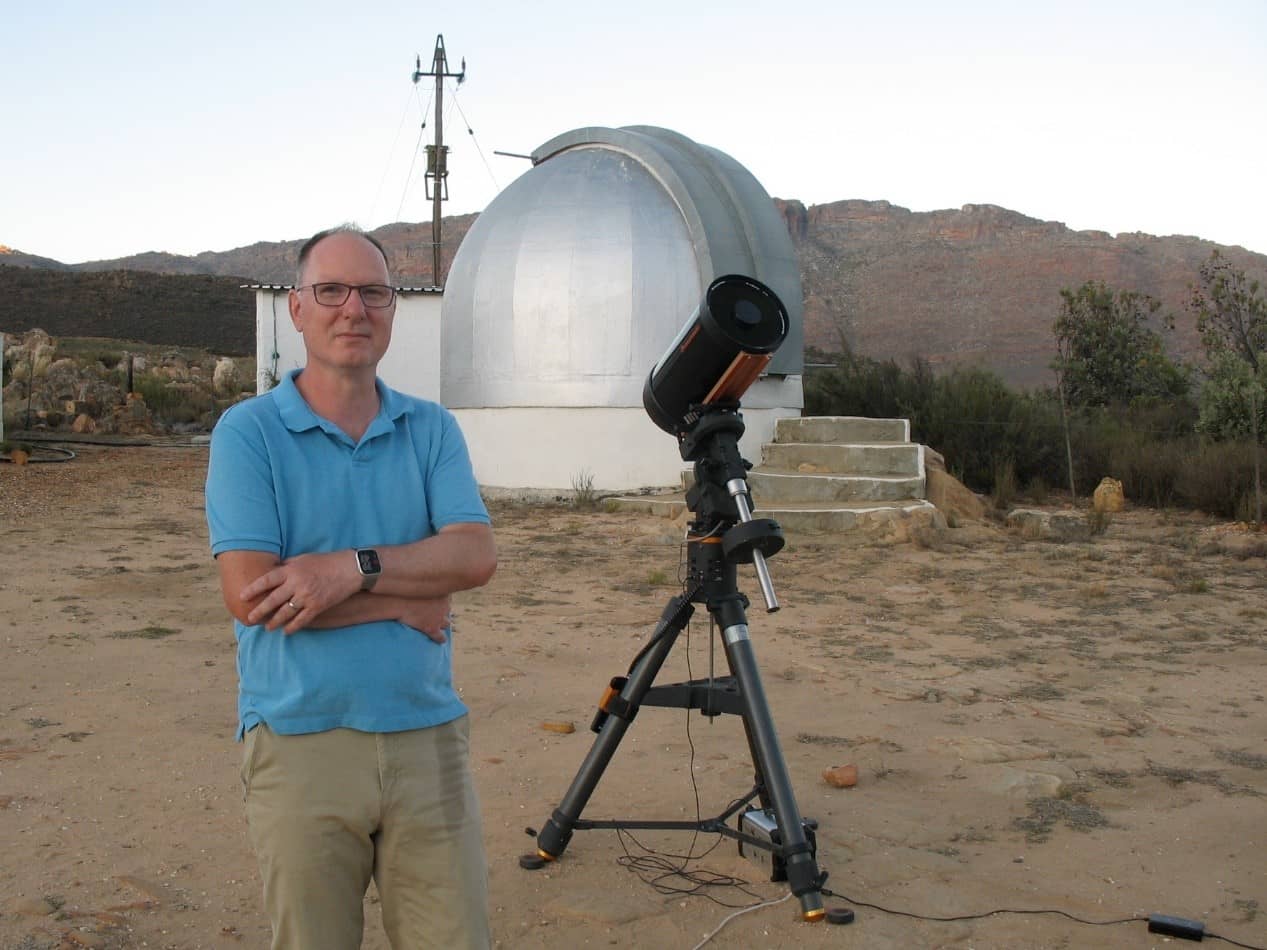
It’s a very long story. I got interested in astronomy while I was growing up in Northern Ireland during the 80s and helped run the school astronomy club. I owned a home made 10” Dobsonian and we would run observing sessions from by backyard. My mom helped carry out the scope and made tea for my teacher Dr Murphy and the rest of the club members. Those fun evenings under the stars and the enthusiasm of my teacher led me to study Physics at London University and eventually do a PhD in theoretical cosmology. An academic career followed, which eventually led me to settle in Cape Town. Some 35 years after those astronomy club days, my father in-law bought me a Celestron Nexstar 8” for my 50th birthday and I stuck a DSLR on the back of it and took my first astro-photo of the Orion Nebula. After that I was well and truly hooked.
I soon realised that the Nexstar was not the best scope to start astrophotography with, so I sold it and bought an 80mm APO from Teleskop Service and a second hand Skywatcher NEQ6 mount. A few months after that, I ordered my first astronomy camera from ZWO – the ASI1600MM Pro, together with their filter wheel and 36mm filters.
A couple of years later the pandemic hit and I used the time at home, together with a period of sabbatical to build a fully automated roll off roof observatory (SilverTree Observatory). It’s currently home to a Celestron Edge HD 9.25 and a RASA 8. I’ve also got a selection of small refractors, which I take with me on weekends away, or to the Cederberg Observatory for outreach events (see https://cederbergobservatory.org.za).
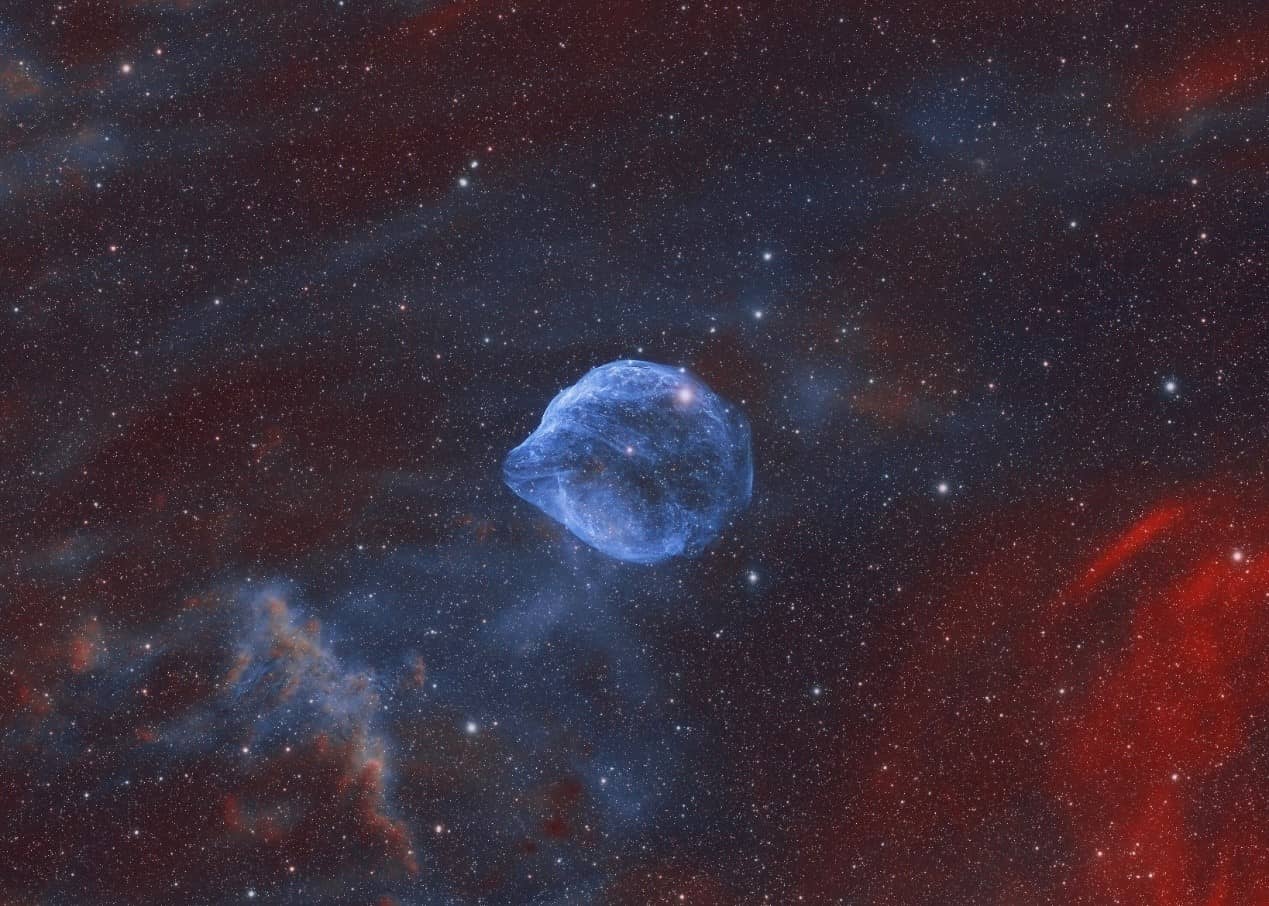
I spent the first two weeks of the year with the family in the Cederberg Mountains. This gave me a fantastic opportunity to capture some broadband targets from a Bortle 1 site. I brought with me two rigs. The Redcat 51, ASI2600MM Pro & AM5 mount were used to capture a HOO image of the Dolphin head nebula (SH2-308), while my Teleskop Service 94EDPH, ASI2600MC Pro & EQ6-R mount captured my winning image – M78 together with part of Bernard’s loop (Sh2-276). It’s a combination I have always wanted to photograph and something that can only be done probably with very dark skies.
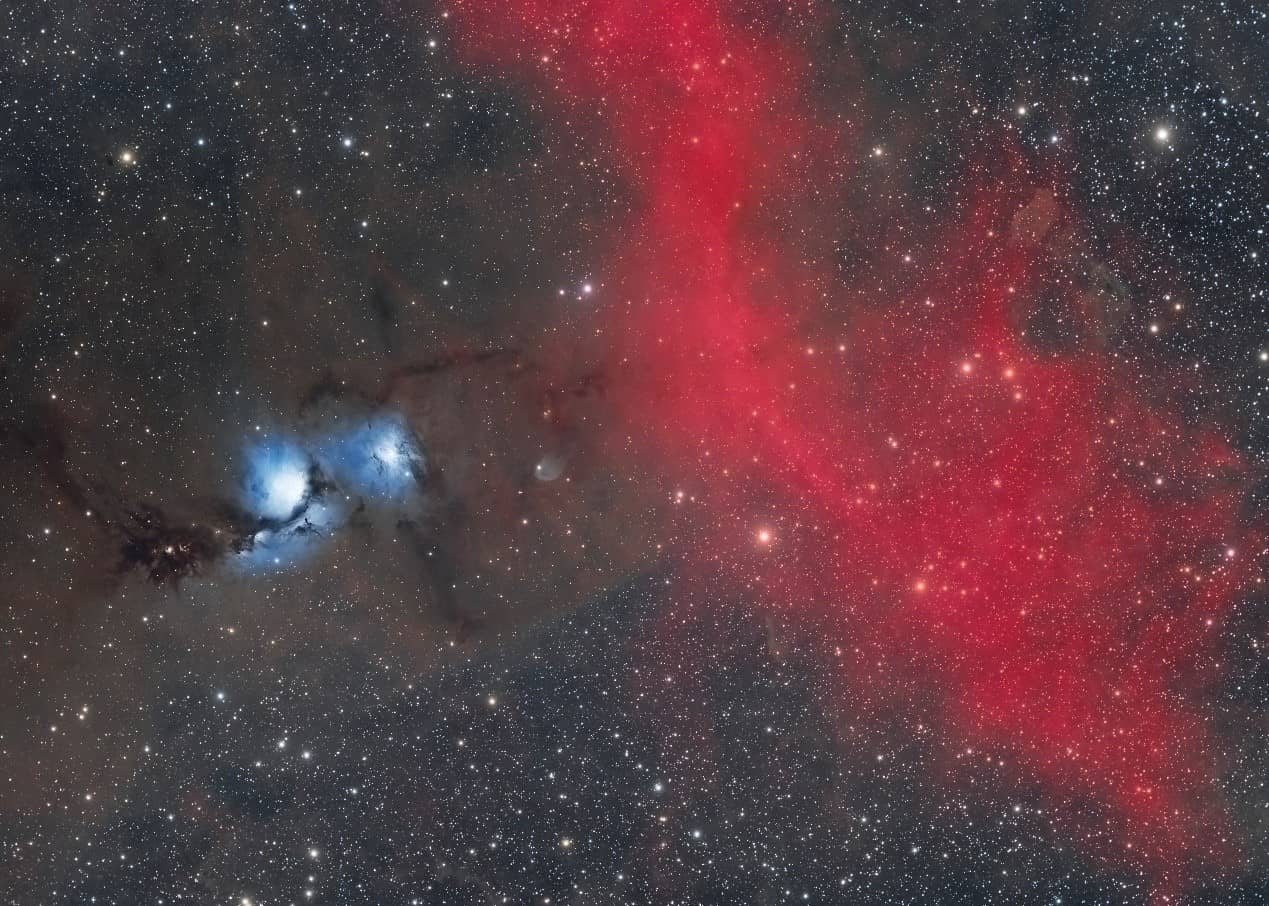
For the winning image, I used the Teleskop Service 94EDPH, ASI2600 MC Pro camera and EQ6-R mount, everything controlled using an ASIAIR Plus.
In my observatory, I’ve got a RASA 8 mounted on an EQ6-R and an Edge HD 9.24 on an EQ8-R. I’ve also got 94mm & 140mm APOs from Teleskop Service, which I also use in the observatory from time to time. Finally for wide field work, I use a Samyang 135mm lens or the Redcat 51.

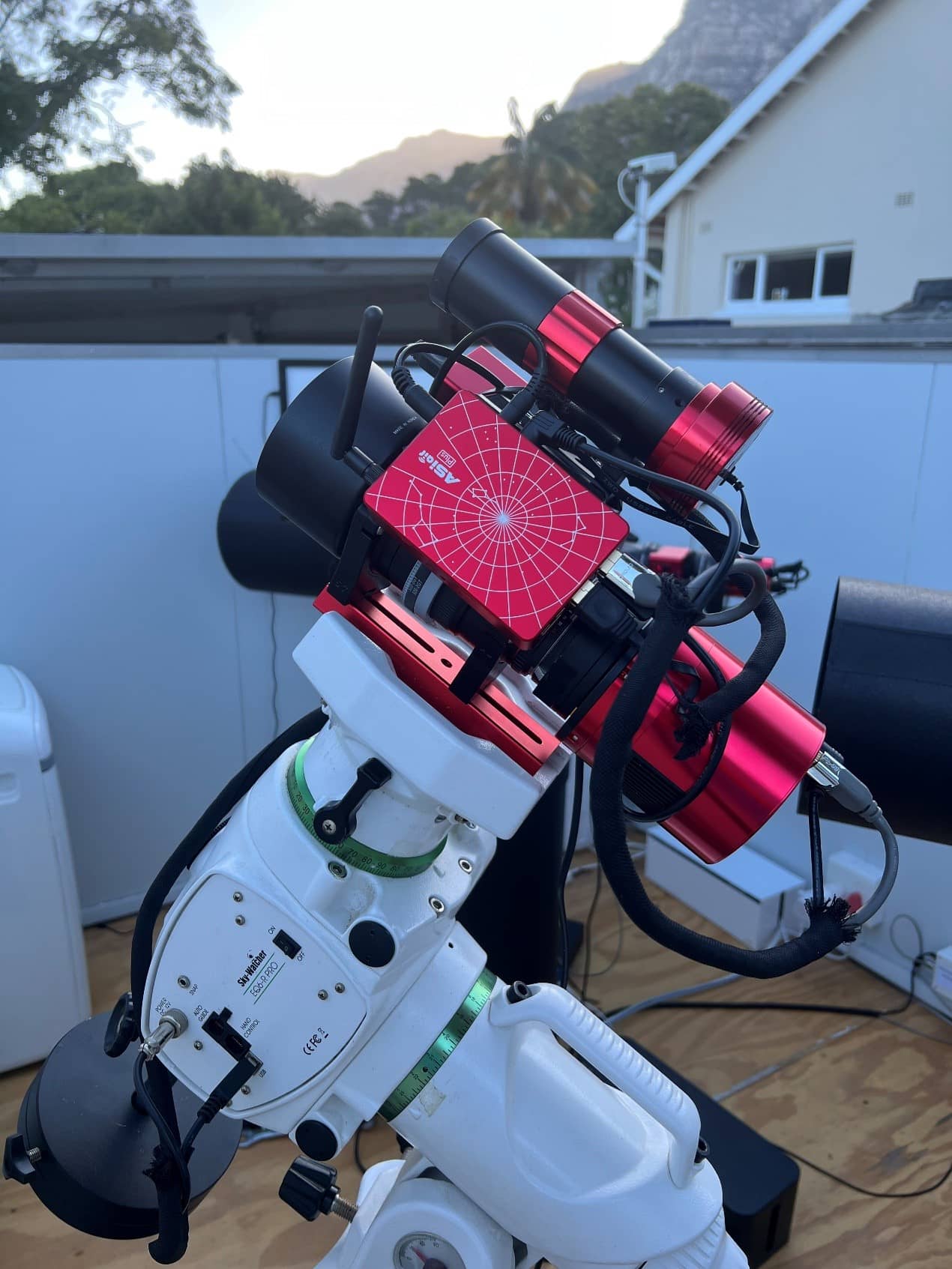
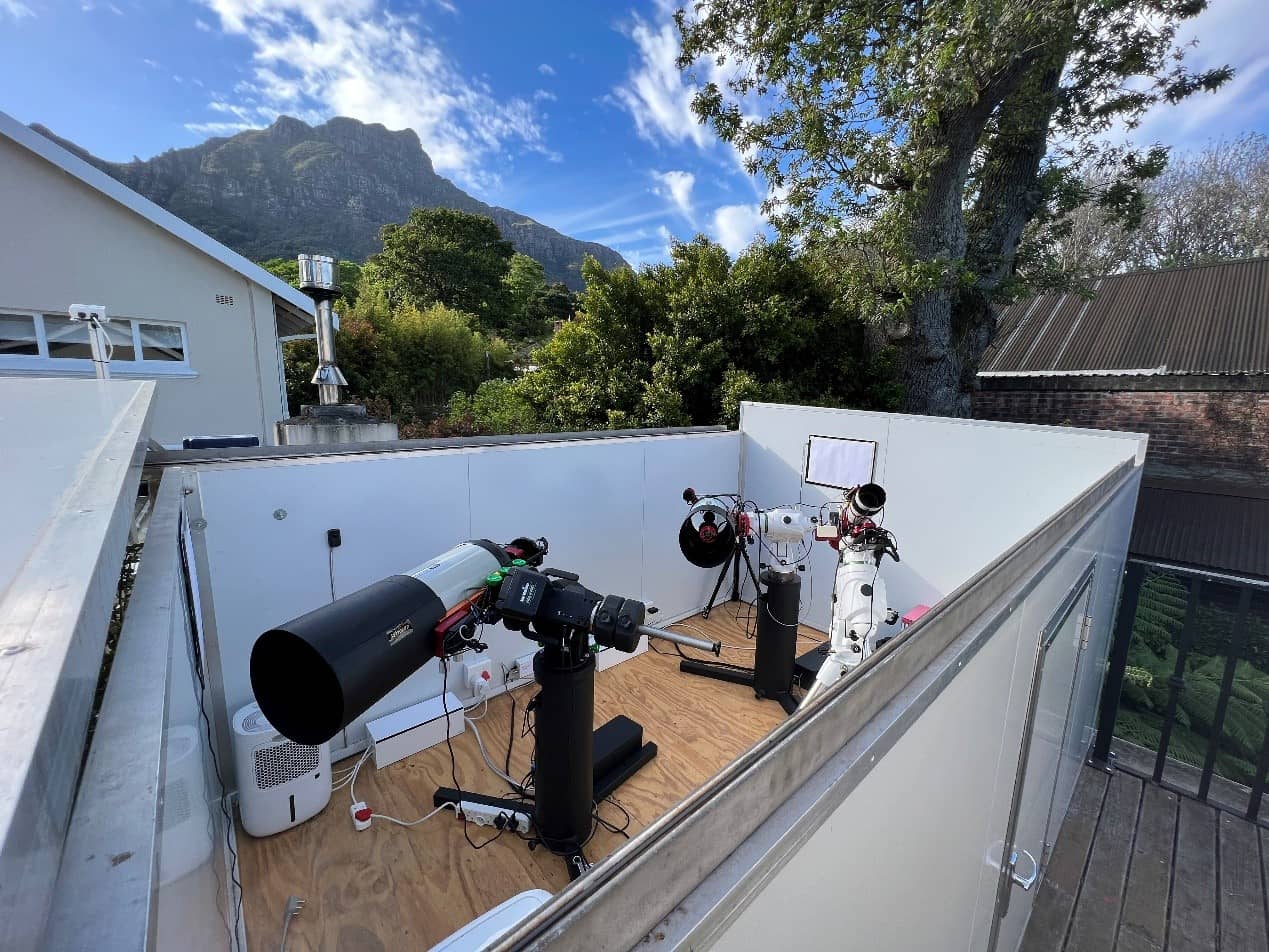
I exclusively use Pixinsight for all my processing. I’ve learned a lot over the last few years and have found is that when it comes to data, quality trumps quantity. I always put my subs through subframe selector using quite strict criterion on FWHM, eccentricity and number of stars. I then create the masters using the weighted batch pre-processing script. After that I remove gradients, apply deconvolution, stretch and combine the data. I then remove the stars and process the starless image as required (artist’s prerogative), adjusting contrast and saturation levels. I also find that colour masks really help with these steps. Once I’m done with this, I pop the stars back. I am not a huge fan of noise reduction, so rather capture more data and keep this final step to a minimum.
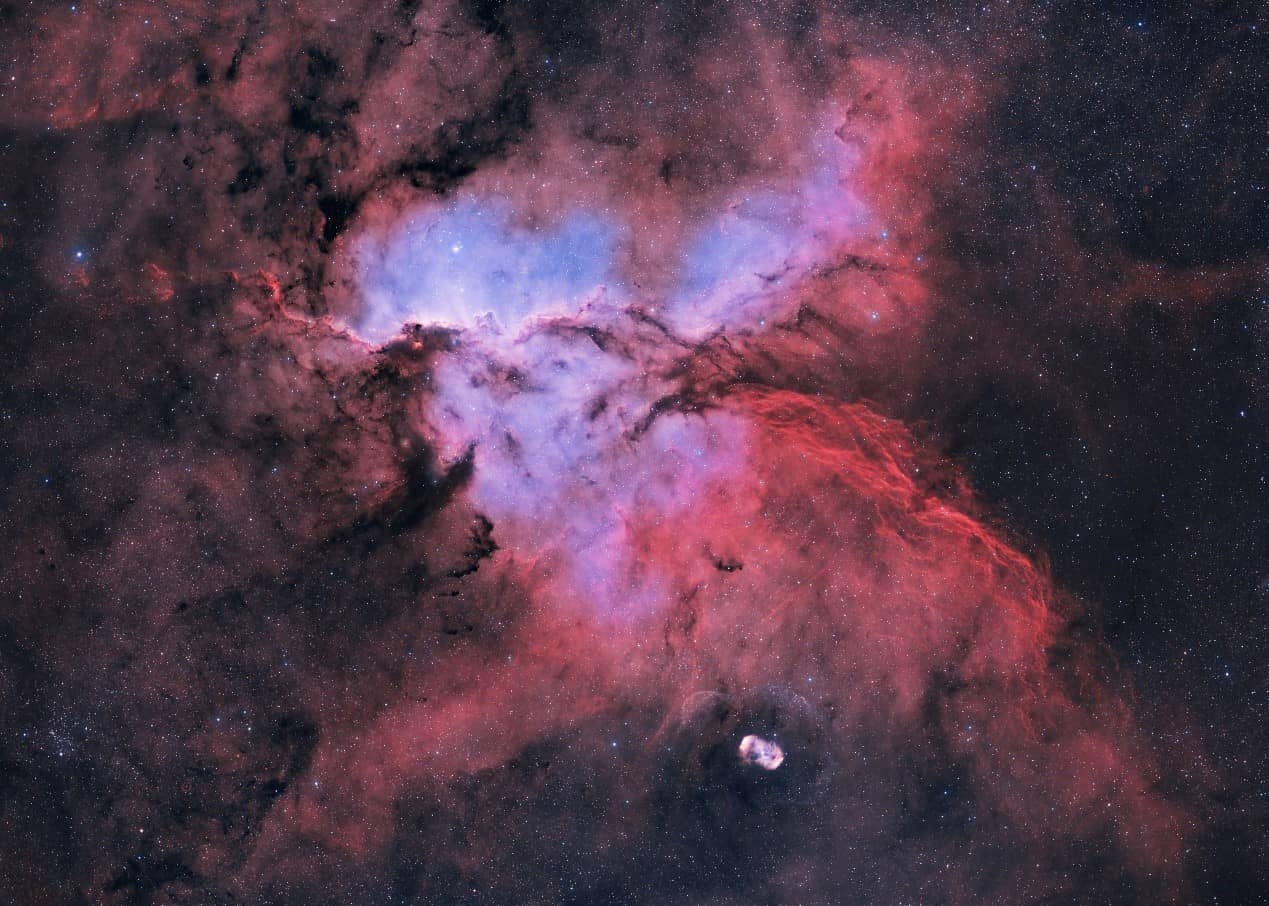
The biggest advice I can give people beginning this hobby is not to give up and learn something every time you go out. Astrophotography is a marathon, not a sprint. Take your time, be very patient and most of all enjoy the journey. It’s worth it in the end.

My home is located in a Bortle 7/8 zone, so I focus mostly on narrowband imaging from there. Most of my broadband data is captured from dark skies. Lucky you can get to several Bortle 1 areas within 3 hours drive of Cape Town, so when I go away with the family, an AM5 and small refractor always comes with us.
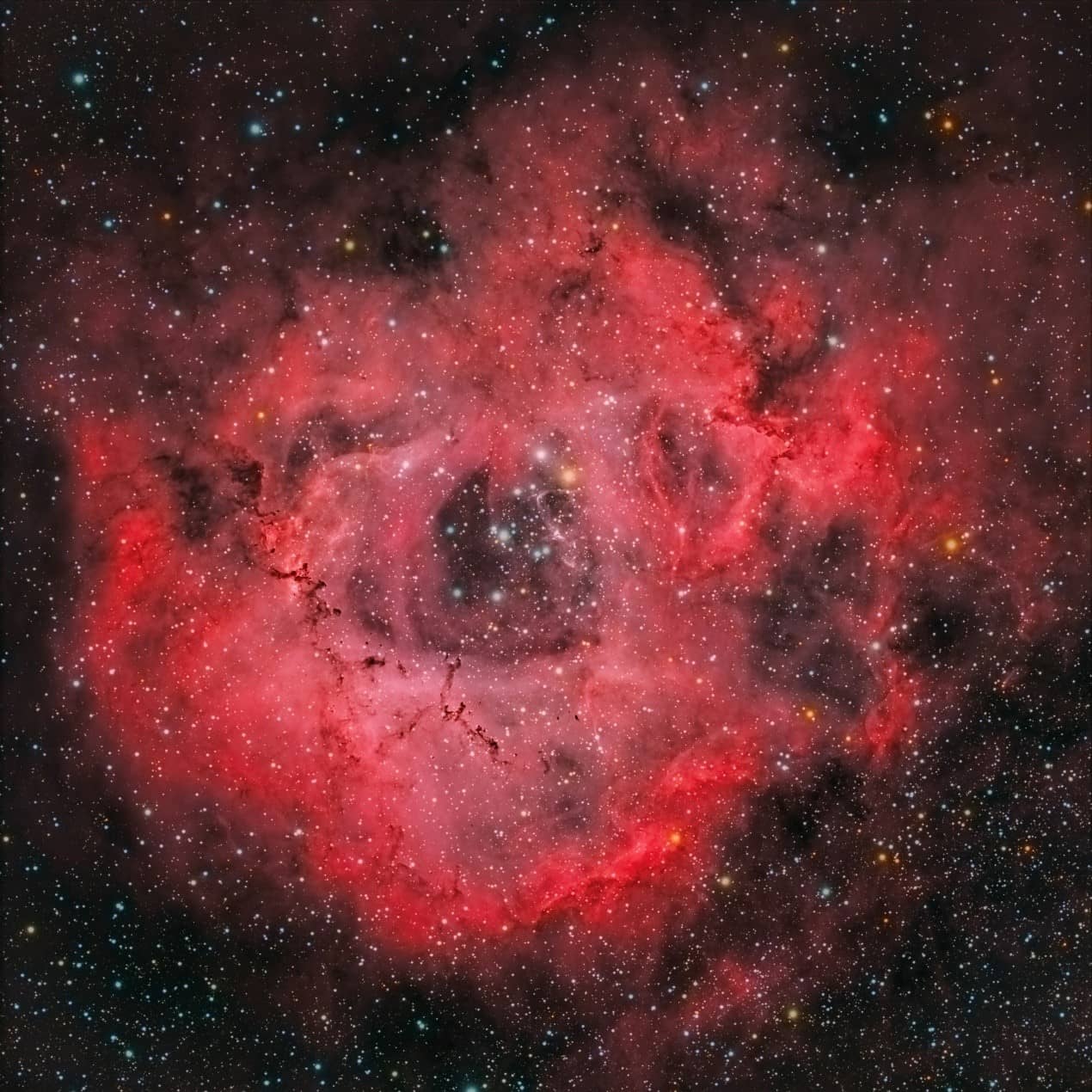
In the beginning, I did everything wrong. However those initial images taken with the Nexstar 8” got me very excited about what might be possible and encouraged me to keep trying. I remember capturing an image of the Southern Pinwheel galaxy (M83) and showing it to a few friends. It wasn’t the best image, but they were very impressed that one could photograph something 15 million light years away with such a basic setup.

At the moment I am using the ASI2600MM & MC Pro cameras with my refractors and the ASI294MM Pro with my Edge HD 9.25 and the RASA 8 (bin 1 mode). I’ve also got the ASI533MM & MC Pro, which I also use with the RASA 8.
The Carina Nebula captured with the RASA 8 & ASI2600MM
It has certainly made me more patient! I’ve also enjoyed how it has impacted my public outreach activities. Nothing beats seeing the excitement on people’s faces when an image of a nebula or galaxy pops up on the iPad screen.

Every night under the stars is memorable, but by far, my favourite ones are when I am up in the Cederberg mountains under Bortle 1 skies sharing the joys of astronomy and astrophotography with the public.

I would really love to do more broadband imaging, but this would require me to spend more time in a dark sky location. Living and working in a city makes this difficult, so I have a plan to build a remote observatory over the next year. This will be a game changer and will allow me to take my hobby to the next level. Also if there is anyone up in the northern hemisphere, who would be willing to host one of my telescopes for free, please contact me!
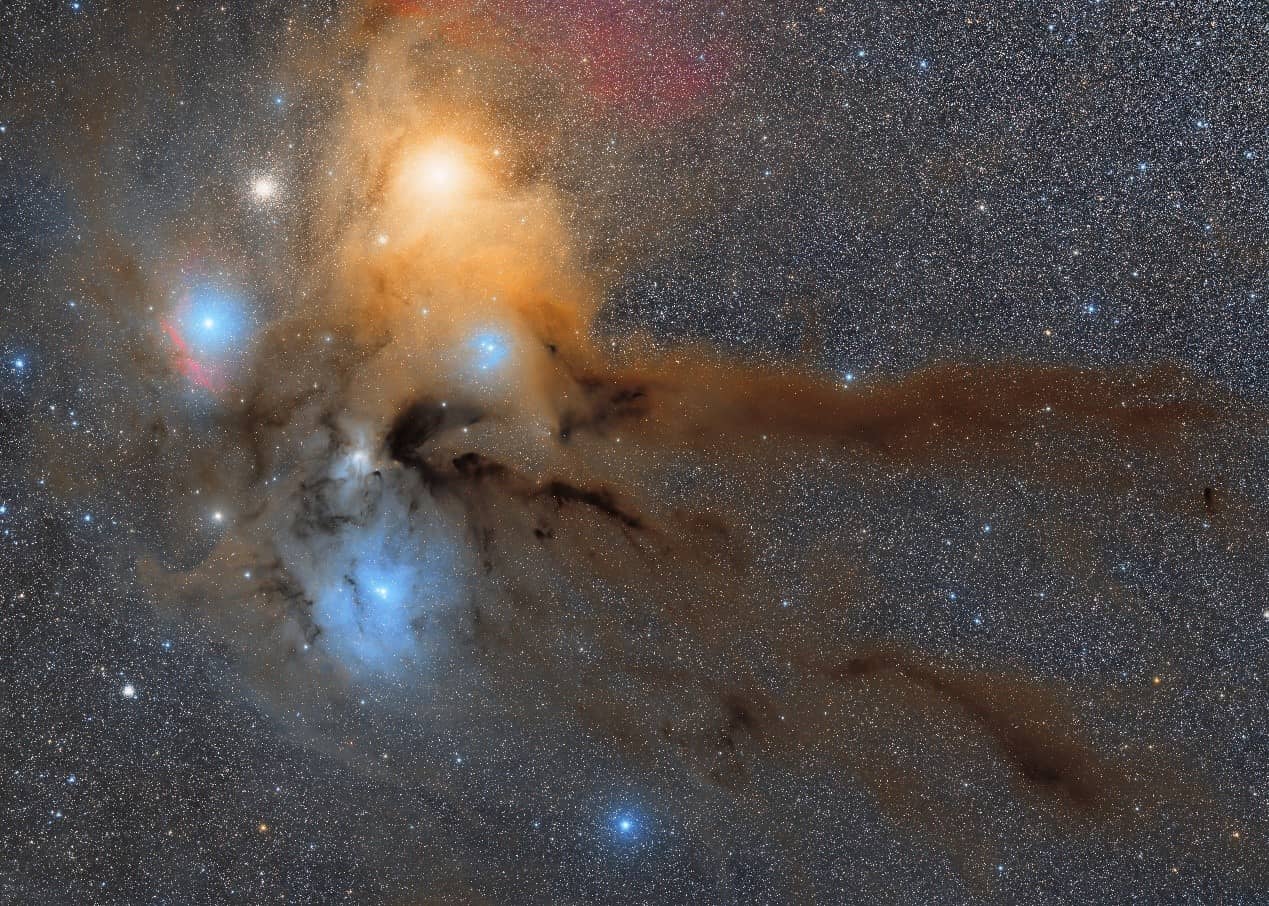

Recently, a major discovery by an international team of amateur astronomers and scientists has become a huge online hit, and this new discovery is just located in one of the

1. How It All Began For Puig Nicolas, it all started at the age of 10 with a 60/700 refractor and a 114/900 reflector. His first celestial encounters — the
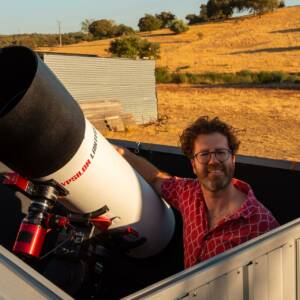
By day, David Cruz works as a digital designer. By night, he designs something far greater — images of the universe itself. “Since I was young, I was always interested
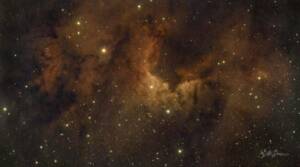
bbrown_admin, October 30, 2025 INITIAL IMPRESSIONS: The ZWO ASI585MC Air came well packaged from the manufacturer. The box is improved and has an impressive feel with a magnetic closure on
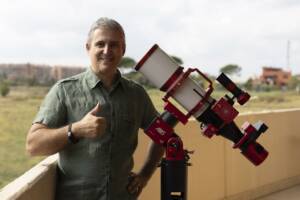
– Q3 ASIWEEK Winner Gianni Lacroce’s Astrophotography Journey Hi, I’m Gianni Lacroce, an Italian astrophotographer. My passion for the night sky began long before I owned a telescope or a
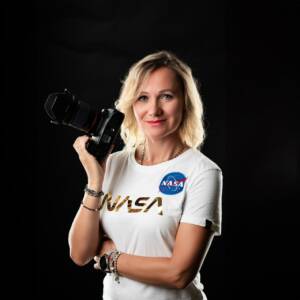
INTRODUCTION My name is Marzena Rogozińska. I live in Bytom (Poland) and work as a psychologist and pedagogue at two schools. I would like to thank you for honoring my